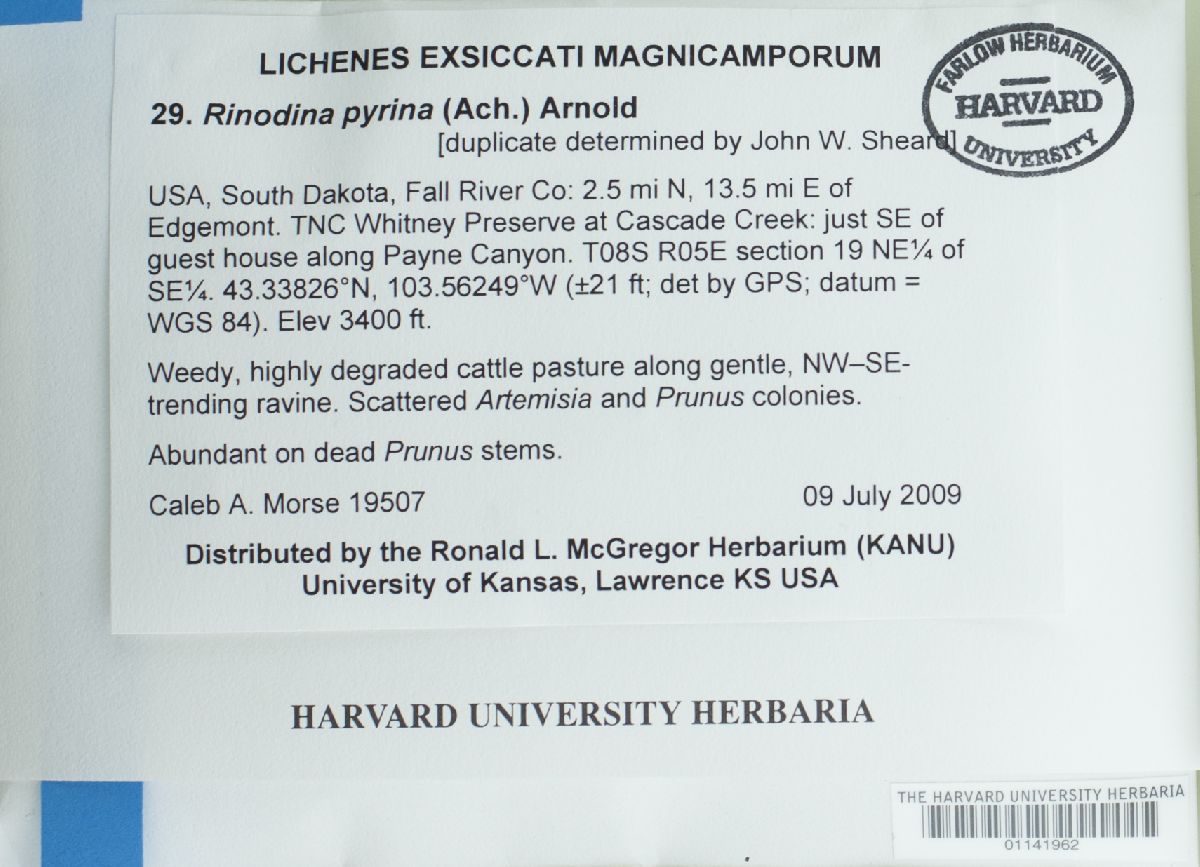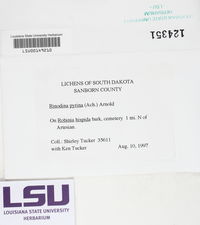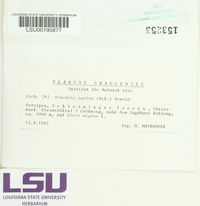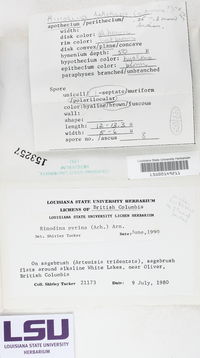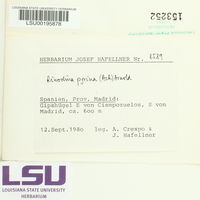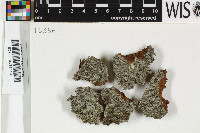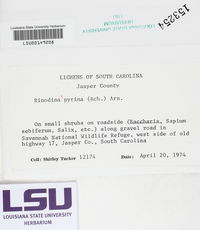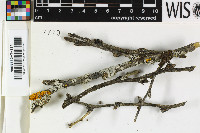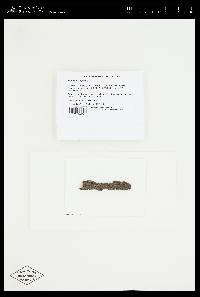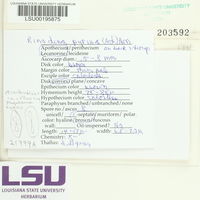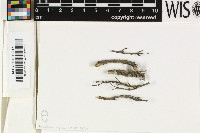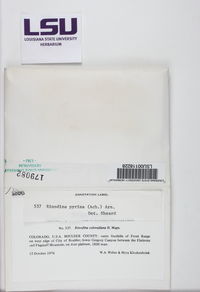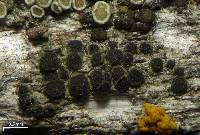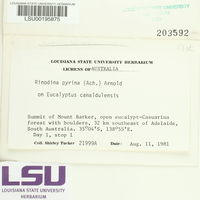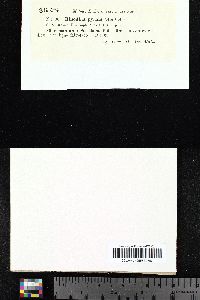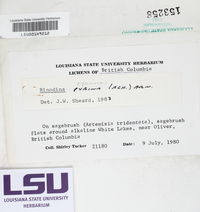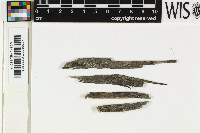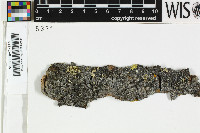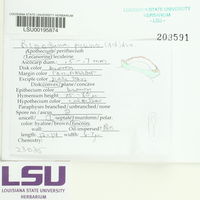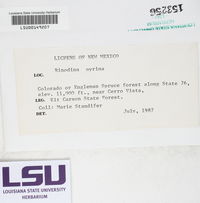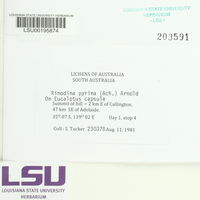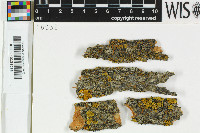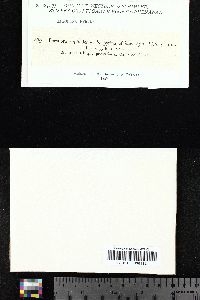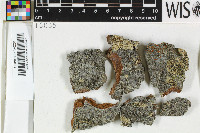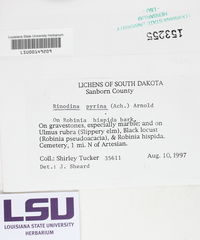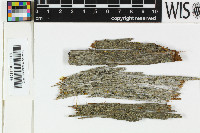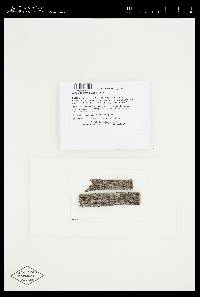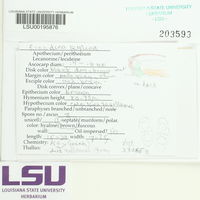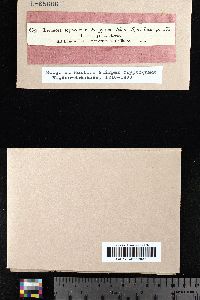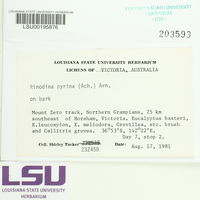
Consortium of Lichen Herbaria
- building a Global Consortium of Bryophytes and Lichens as keystones of cryptobiotic communities -
- Home
- Search
- Images
- Species Checklists
- US States: O-Z >
- US National Parks
- Central America
- South America
- US National Parks
- Southern Subpolar Region
|
|
|
|
Family: Physciaceae
[Lecanora pyrina (Ach.) Röhl., moreLichen pyrinus Ach.] |
Nash, T.H., Ryan, B.D., Gries, C., Bungartz, F., (eds.) 2004. Lichen Flora of the Greater Sonoran Desert Region. Vol 2. Thallus: crustose, thin or evanescent, at first comprised of discrete, convex areoles, up to 0.2-0.3 mm wide, becoming continuous or rimose, plane or rugose surface: light or dark gray, dull; margin: indeterminate; prothallus: lacking; vegetative propagules: absent Apothecia: adnate, frequent, often becoming contiguous, up to 0.3-0.5 mm in diam. disc: dark brown becoming black, usually becoming convex thalline margin: concolorous with thallus or lighter, c. 0.05 mm wide, entire, persistent or becoming excluded; excipular ring: absent thalline exciple: 40-80 µm wide; cortex: 5-10 µm wide; epinecral layer: sometimes present, c. 5 µm wide; cortical cells: up to 4-5.5 µm wide, mostly unpigmented; algal cells: up to 13.5-21.5 µm in diam. proper exciple: hyaline, 5-15 µm wide laterally, expanding to 15-25 µm at periphery hymenium: 55-80 µm tall; paraphyses: 2-3 µm wide, not conglutinate, with apices up to 4.5-5.5 µm wide, darkly pigmented, forming a dark, red-brown epihymenium; hypothecium: hyaline, 3060 µm thick asci: clavate, 35-55 x 11-15 µm, 8-spored ascospores: brown, 1-septate, elongately ellipsoid, type A development, Physconia-type, (10.5-)12.5-13.5(-15.5) x (5-)5.5-6(-7) µm, septa and apical wall thickening sometimes visible in immature spores, lumina quickly becoming inflated and walls uniformly thin, elongate spores frequently curved; torus: present or absent; walls: not ornamented Pycnidia: immersed in thallus conidia: bacilliform, 4-6 x 1-1.5 µm Spot tests: all negative Secondary metabolites: none detected. Substrate and ecology: on bark, often of eutrophic habitats World distribution: Europe, Asia, northern Africa, Australasia, and common in north temperate North America Sonoran distribution: rare in Santa Barbara and San Bernadino Counties, California, and Baja California, the southern limit of its range. Notes: Rinodina pyrina is characterized by its gray thallus, crowded and usually convex apothecia, and its small, Physconia-type spores with the lumina quickly becoming expanded to exclude the septal wall thickenings. There is a possibility that the Sonoran records are introductions as seems to be the case for all Australasian specimens (Mayrhofer et al. 1999) and a Colorado population (Carmer 1975). |
Powered by Symbiota

